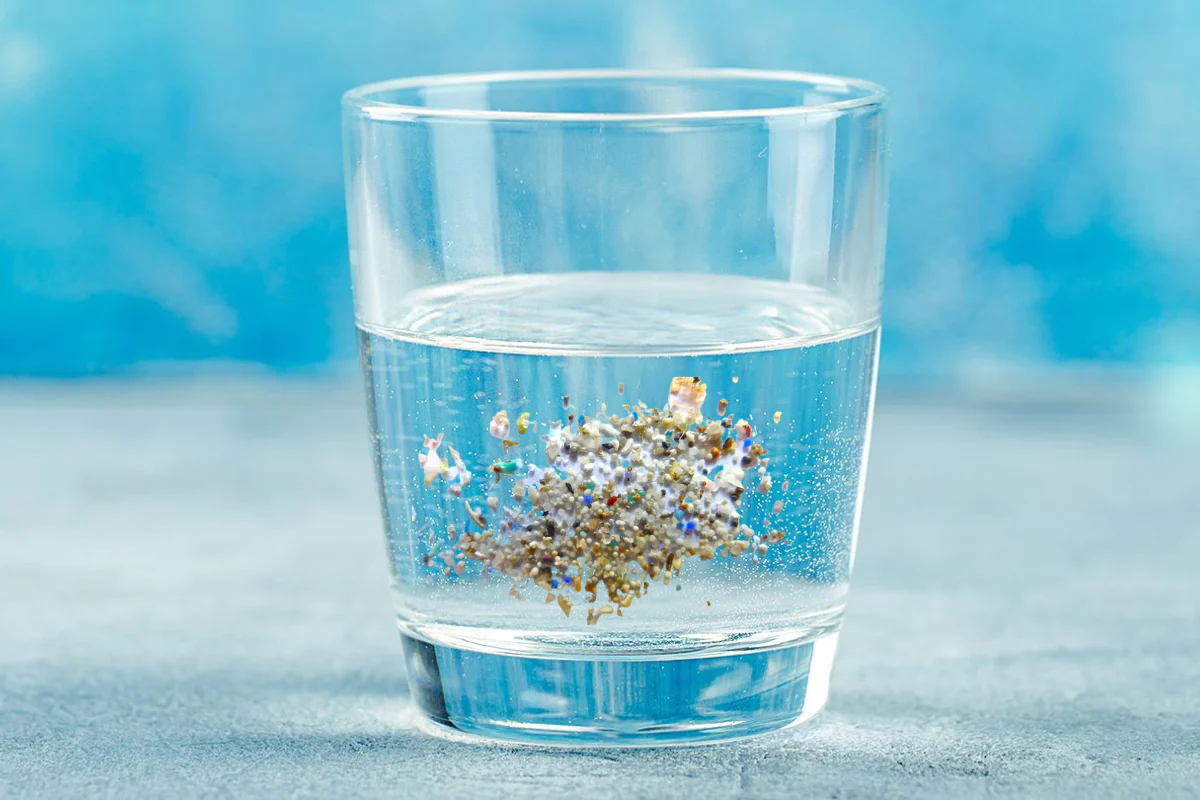Microplastics cause unpredictable harm to human health, but there are still ways for us to remove most of the microplastics in water before they enter our bodies.
Nowadays, the “plastic crisis” with microplastic particles present everywhere in life has become an urgent global issue. Microplastic particles are small pieces formed from the decomposition process of plastic products such as plastic bottles, nylon bags, plastic utensils… discharged into the environment. This type of particle is very small in size, with a diameter of less than 5mm.
Microplastics are found in many places on earth such as oceans, rivers, forests, soil, animal bodies… Due to their insoluble and difficult-to-decompose properties, these microplastics will accumulate in the bodies of animals and plants when they are accidentally eaten or absorbed. As humans continue to consume animals and plants, we will continue to accumulate microplastics in our bodies and adversely affect our health.
According to a report published by the US National Academy of Sciences in 2024, a study revealed that on average, there are about 240,000 microplastic particles in every liter of bottled water. These microplastic particles can penetrate our intestinal or lung cells, then travel through the blood to the heart and brain. For pregnant women, they can even cross the placenta and enter the fetus.
With such serious plastic pollution, how can we ensure the safety of drinking water? According to experts, there is an extremely simple way to remove a large amount of microplastic particles from drinking water before we put them into our bodies.
Boil water
Dr. Liu Xiaochuan, Director of the Department of Gastroenterology and Infectious Diseases at Beijing General Hospital of Emergency Medicine, said that boiling water is a simple and effective way to reduce microplastic content. According to Dr. Liu, recent research findings on microplastics in bottled water are alarming and force us to reconsider our drinking habits. For most households, boiling tap water for drinking is a simple and effective way to kill bacteria and filter out microplastics.
In 2024, the Washington Post reported that Professor Eddy Zeng of Jinan University in China and his colleagues tested tap water samples from Guangzhou, China, which had an average microplastic content of 1 mg/liter, and boiled the water for 5 minutes. After boiling, the level of microplastics was found to have decreased by nearly 90%.
Professor Tang Vinh Binh said that the amount of microplastic particles absorbed through boiled water is estimated to be 2-5 times lower than that of direct tap water. The reason is that when boiled, natural calcium carbonate (commonly found in tap water) precipitates into a solid, white powder called limescale, and this substance retains microplastic particles. Especially in “hard water”, or water with high concentrations of minerals such as calcium and magnesium, the amount of microplastic particles will be removed more than in “soft water”. The study was published in the journal Environmental Science & Technology Letters in 2024.
Based on research, it can be seen that boiling water before drinking is indeed an effective way to reduce the amount of microplastic particles absorbed into the body.
To ensure safe drinking water, you need to do the following four things:
- Choose good quality bottled water: When buying bottled water, pay attention to the product label and certification information, and choose a brand that guarantees quality. Avoid buying bottled water from unknown sources or at very low prices.
- Replace your kettle and mug regularly: Even high-quality kettles and mugs can wear out over time, leading to the release of microplastics. To ensure your health, replace your mugs and kettles after a long period of use and keep them clean.
- Installing a home water purifier: Installing a home water purifier is also one of the measures to effectively remove impurities and microplastic particles in water, providing us with a safer source of drinking water.
- Use a stainless steel or glass kettle: This makes boiling water safer, as these materials are less likely to release microplastics. In particular, people should avoid using plastic water bottles, especially at high temperatures, as the chemicals in plastic can accelerate the degradation process and increase the risk of microplastic formation.
